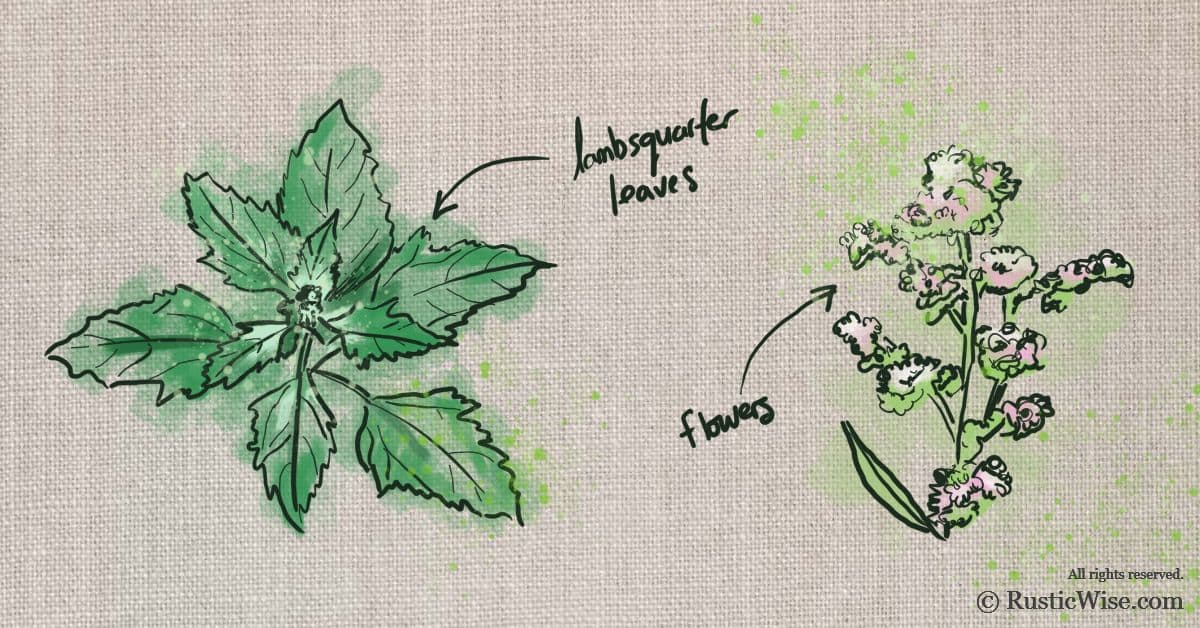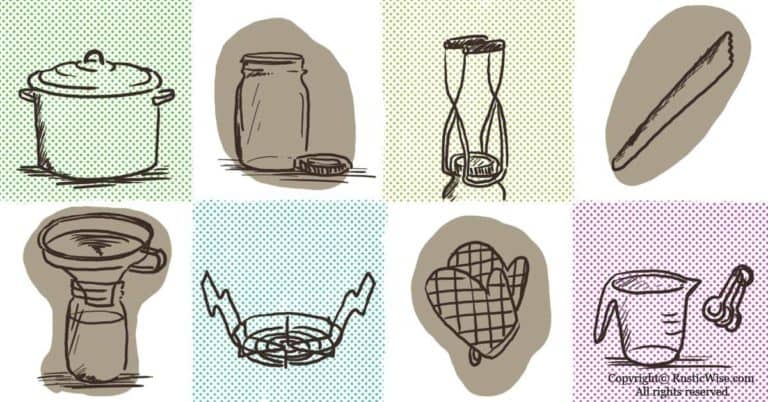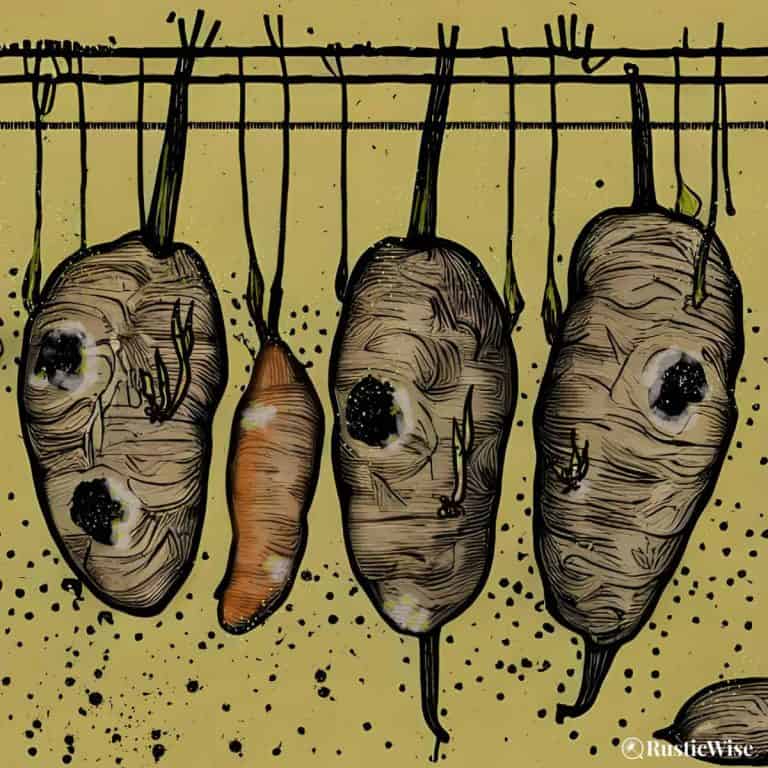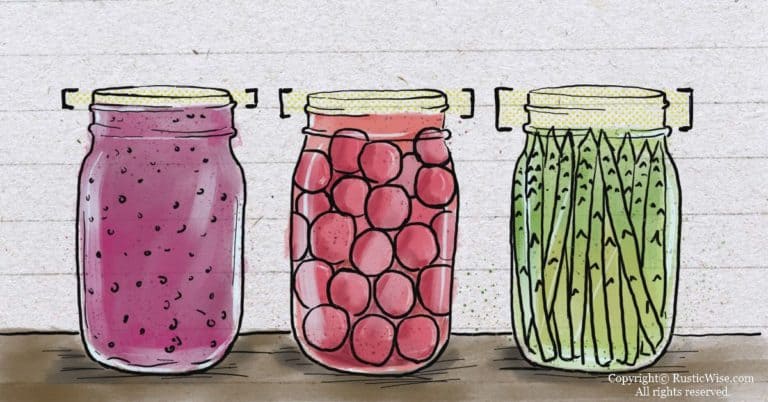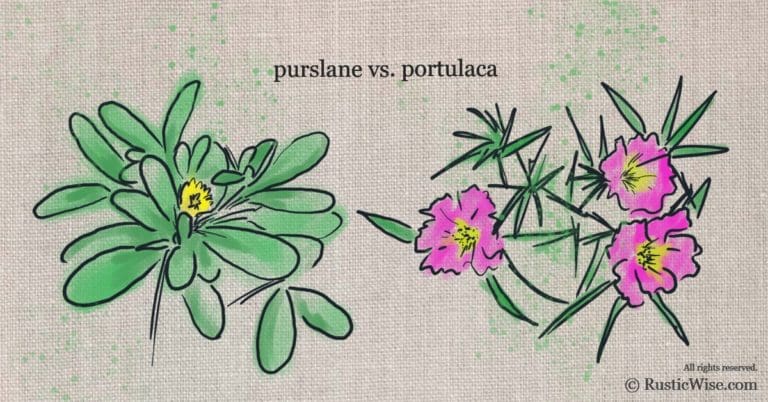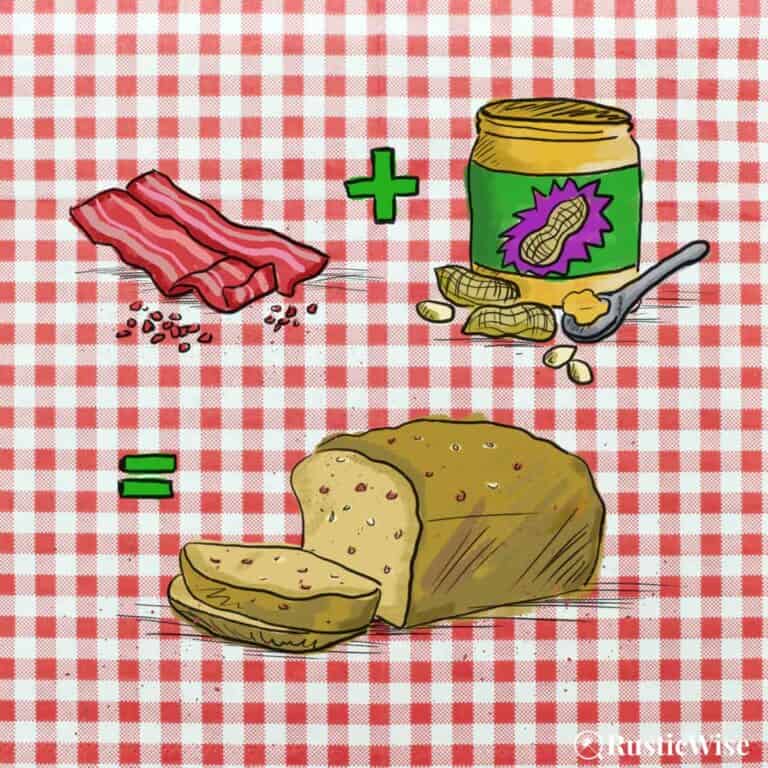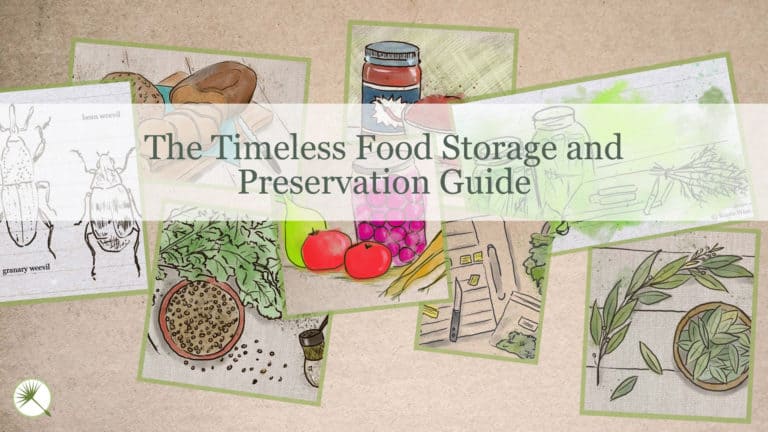Lambsquarters Identification: How to Forage this Edible Wild Plant
Learning to identify wild edible food is a rewarding journey. Not only do you get better acquainted with the wild plants growing in your own backyard, you also get to reap the nutritional benefits of these greens—for free!
Imagine finding a patch of edible wild spinach. That’s essentially what lambsquarters is. It’s a mild leafy green with a nutritional profile packed with fiber, vitamin C, beta-carotene and plenty of other nutrients.
Common lambsquarters is a member of the Chenopodaceae family which falls under the larger umbrella of the Amaranth (Amaranthaceae ) group. The leaves are edible and the seeds can be gathered and used like quinoa. It’s a summer annual that reseeds itself.
Lambsquarters (or lamb’s quarters depending on which spelling you prefer), is a plant that goes by many names. Common lambsquarters, or Chenopodium album is perhaps the most widely spread plant and is found in most countries around the world. Other common names of lambsquarters include: goosefoot (because its leaves resemble webbed feet), white goosefoot, baconweed, fat hen, and frost-blite.
Another common species of lambsquarters that’s native to North America is Chenopodium berlandieri, also referred to as pitseed goosefoot. Both common lambsquarter and pitseed lambsquarter are edible and often create hybrid plants together.
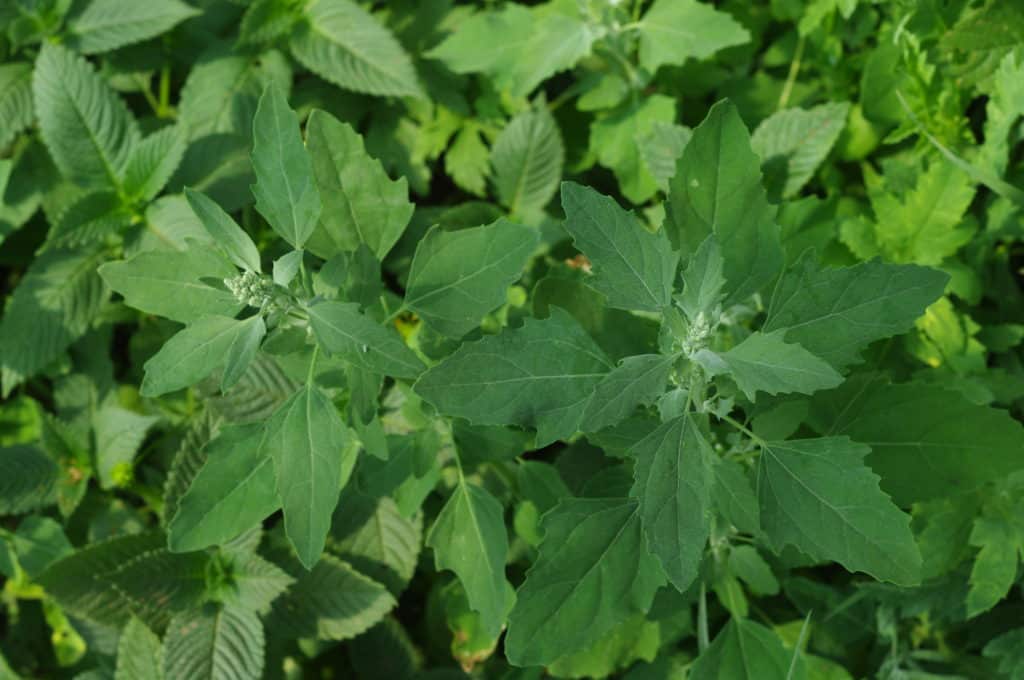
Credit: Flickr / Daniel, Chenopodium album
Where it grows
If you walk around your yard or neighborhood in the warmer months, you’ll likely find some lambsquarter growing beside fences, or along sidewalks and roads.
This resilient plant grows in areas with disturbed soil, landscaped yards, agricultural lands, gardens, and waste yards. It’s not too picky about soil conditions but if you see a patch of lambsquarters, it’s a good sign the soil quality is decent.
Lambsquarters enjoy full to partial sun. It’s a hardy plant which can withstand colder temperatures and a bit of frost.
Often you’ll find lambsquarters growing in patches as they produce tons of seeds with many reseeding all around the mother plant.
Lambsquarters identification: leaves and flowers
Common lambsquarter is an herbaceous plant with great variation in leaf shape. Leaves are green with thick, ribbed stems that range in color from reddish-purple to light silver-green. The plant has many branches, and larger plants can look quite full and lush. They can grow up to 7 feet (2.13 m) tall!
The defining characteristic of lambsquarter is a white powdery/waxy undercoating on leaves. Turn a leaf over, and you should see a whitish underbelly that rubs off easily.
This white substance forms a layer of protection for the plant to keep it hydrated. Sometimes you’ll see a purplish marking where leaf stems meet the main stalk.
Let’s take a closer look at the leaves and flowers of common lambsquarters.
Lambsquarter’s leaves
To the touch, lambsquarter leaves feel soft and velvety. Leaves are between 3–6 inches long (7.62– 15.24 cm) and 1–3 inches wide (2.54–7.62 cm). Young plants begin with leaves growing on opposite sides. As it grows larger, it begins to sprout leaves in an alternating pattern along the stem. Young sprouts may have a light dusting of white at the center of the plant.
It’s a bit hard to describe the shape of the leaves as there’s so much variance within a single plant. Many leaves follow the shape of a goose’s webbed foot; leaves have slightly lobed edges with two protruding points at the wider end. Other leaves are triangular.
Lambsquarter’s flowers
At the tops of stems, you’ll see small, clustered flowers of white, or light greenish-yellow. The flowers don’t have petals—they’re inflorescences, which remind me of tiny cauliflowers.
Many seeds form in these tiny clustered flowers. One plant can produce up to 72,000 seeds! It’s because of this prolific seed production that it’s considered an invasive weed by some.
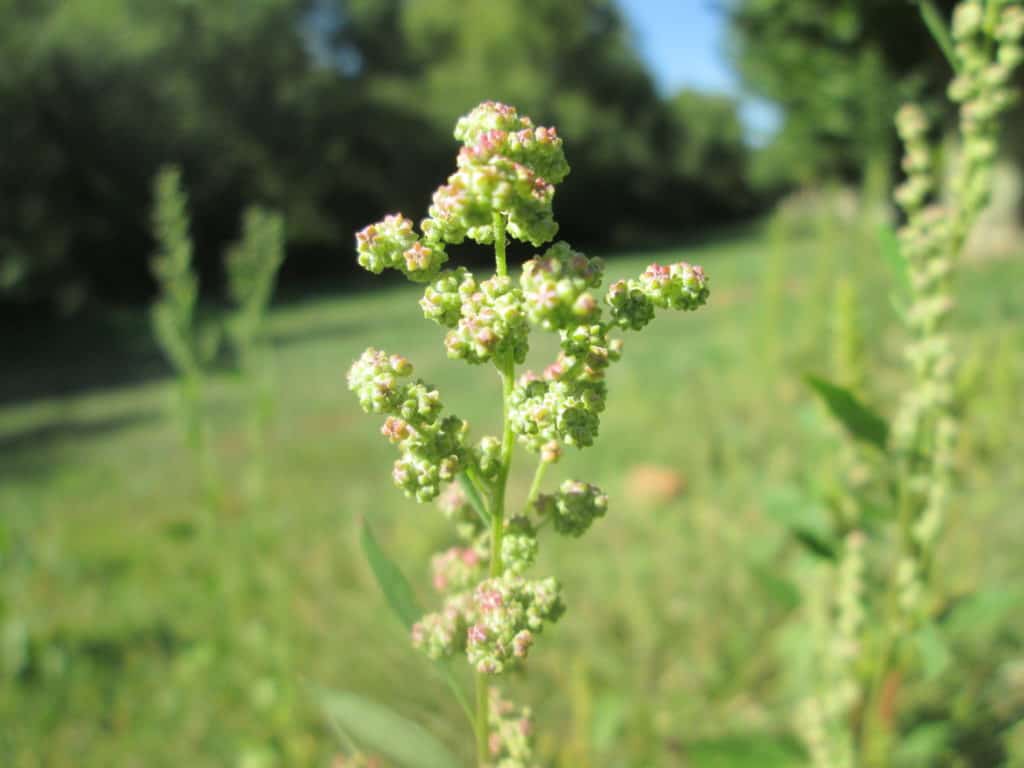
Credit: Andreas Rockstein / Flickr, Chenopodium album
Lambsquarter’s lookalikes
Lambsquarters has a few lookalikes. Please use caution when foraging. If you’re not 100 percent sure you’ve identified lambsquarters, ask a local specialist for help.
Lambsquarters is a close relative of the orache species (Atriplex hortensis) which has purplish leaves. Orache is also an edible plant.
Sometimes people confuse lambsquarters with black nightshade (Solanum nigrum). While it grows in many of the same areas as lambsquarters, you can tell it apart by its smoother, egg-shaped leaves. Lambsquarter leaves have more jagged edges. Its flowers are also different from lambsquarters in that they actually have petals. Black nightshade has berries and there are reports of people getting ill from eating them. While technically not poisonous, it’s safer to stay away from black nightshade unless you have experience with using this plant.
And further down the line, there is a dangerous look alike to black nightshade: deadly nightshade (Atropa belladonna). Deadly nightshade has berries that grow individually, whereas black nightshade’s berries grow in clusters. Unlike lambsquarters, deadly nightshade’s leaves are rounder with petaled flowers.
Foraging tips
You’ll see young lambsquarters start to sprout in early spring or summer. Flowers form toward the end of the growing season with their stockpile of seeds dispersed in the fall and winter. The seeds of common lambsquarters are small and black, each covered with a greenish-white coating.
Leaves and seeds are edible, so are the shoots and flowers to a degree. The seeds contain saponins and oxalic acid. It’s best to cook or steam them before eating. Lambsquarter leaves also contain oxalic acid at similar levels of spinach. If you’re not able to digest spinach, lambsquarters may not be for you.
As with any other wild edible plant, use caution when harvesting. Has the area been sprayed with herbicides or pesticides? Avoid any plants that look wilted or discolored. Are you at least several meters away from roadsides to avoid pollutants? The best places to harvest are areas you’re familiar with such as your own backyard. Please ask a local specialist if you need help with lambsquarters identification.
It’s best to harvest lambsquarters when the shoots are young and tender and well before any flowers appear. When harvesting, take a pair of scissors with you to snip off stems and leaves. As lambsquarters produce more than enough seeds and re-seed themselves, you won’t need to worry about over-harvesting this plant.
If you’re looking to collect seeds, wait until the fall when the seed heads are dry and brow. Gently crush them between your hands to remove the chaff and keep the black/brown seeds.
Health benefits of common lambsquarters
In terms of vitamins and nutrients, common lambsquarters offers up a healthy serving. One 100 gram serving of raw lambsquarters leaves provides nearly all of your daily vitamin A and vitamin C requirements according to the USDA. It’s also rich in calcium, potassium fiber, beta-carotene, riboflavin, thiamine, and niacin. (1)
Common uses of lambsquarters
Use lambsquarters like you would use spinach. You can use fresh leaves in salads, blend it to make juices or smoothies, steam it or add to stir-frys.
The seeds can be collected, dried, and ground into flour and incorporated into a number of different recipes such as breads and other baked goods. Lambsquarters seeds can be cooked just like quinoa, or sprouted to produce a batch of mircogreens for a healthy dose of nutrients.
Conclusion
Lambsquarters identification might take a bit of practice. By using caution and arming yourself with the knowledge to differentiate common lambsquarters from other potentially toxic plants, you’ll be able to add a healthy, wild edible plant as part of your diet.
👉 If you like this post, see our Timeless Guide To Foraging for Wild Food. 🌿
Would you like more timeless tips via email?
Fun tips to help you live an independent, self-sustaining lifestyle. Opt-out at any time.


References:
- Blair, Katrina (2014). The Wild Wisdom of Weeds: 13 Essential Plants for Human Survival. Chelsea Green Publishing. ISBN 978-1-60358-516-3.
- North Carolina State University, Extension Gardener Plant Toolbox, Chenopodium album: https://plants.ces.ncsu.edu/plants/chenopodium-album/. Accessed March 2020.
- CAB International, Invasive Species Compendium, Datasheet: Solanum nigrum (black nightshade): https://www.cabi.org/isc/datasheet/50540. Accessed March 2020.
- USDA, Food Data Central, Lambsquarters, raw: https://fdc.nal.usda.gov/fdc-app.html#/food-details/169244/nutrients. Accessed March 2020.

Author: Theresa Tesolin
Theresa is co-founder of RusticWise. She helps people unleash their inner DIY spirit by encouraging them to get dirty and make or grow something from scratch.

